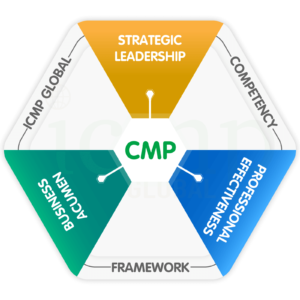HOP – Passport to Prosperity
- About Us
- Professional Certifications
- IT Skills
- Trainings & CPE
- Overview
- Time & Stress Management
- Conflict Management
- Team Building & Leadership Skills
- Finance for Non-Finance Professionals
- Cost Management for Non-Commerce Professionals
- Corporate Governance in Public Interest Companies
- Emotional Intelligence
- Systematic Inventive Thinking
- Professional Ethics
- Entrepreneurship & Innovation
- Consulting Services
- Membership Network
- Think Tank & Advocacy
- About
Us - Professional
CertificationsHouse of Professionals is offering Leadership, Management, and Specialized Certification programs in collaboration with the Institute of Chartered Management Professionals, USA with the objective to enhance the skills set and productivity of individuals. As the vital factor that catch employers are the professional certifications on candidate’s profile which encourage them to select and promote the person from the pool of several candidates.
- IT
SkillsProgramming & Tech
E-Commerce
Graphics & Design
Digital Marketing
Accounting
Office Management
- Trainings &
CPE - Consulting
ServicesIT Services
Engineering Services
- Membership
Network - Think Tank &
Advocacy
- About
Us - Professional
CertificationsHouse of Professionals is offering Leadership, Management, and Specialized Certification programs in collaboration with the Institute of Chartered Management Professionals, USA with the objective to enhance the skills set and productivity of individuals. As the vital factor that catch employers are the professional certifications on candidate’s profile which encourage them to select and promote the person from the pool of several candidates.
- IT
SkillsProgramming & Tech
E-Commerce
Graphics & Design
Digital Marketing
Accounting
Office Management
- Trainings &
CPE - Consulting
ServicesIT Services
Engineering Services
- Membership
Network - Think Tank &
Advocacy
Train the Trainer
Train the Trainer is a specialized training program designed to equip potential and current trainers with the necessary knowledge and skills to design, deliver, and assess effective training sessions. The program focuses on teaching methodologies, facilitation techniques, understanding of adult learning principles, and the use of various training tools and resources. Participants learn how to engage their audience, handle challenges that arise in training settings, and continuously improve their training sessions based on feedback and self-reflection. This investment in trainers not only amplifies their confidence and efficacy but also empowers organizations with the ability to continuously improve and evolve their training methodologies. Ultimately, the program fortifies an organization’s competitive edge by fostering a workforce that’s continually upgrading its skills and knowledge.
- Introduction to Training: Role and importance of a trainer; Differences between teaching, training, coaching, and mentoring
- Learning Theories and Principles: Adult learning principles (Andragogy); Different learning styles (VARK: Visual, Auditory, Read/Write, Kinesthetic) and Motivation and engagement in learning
- Training Needs Analysis: Identifying training needs; Gap analysis; and Designing a training program based on needs
- Designing Training Programs: Setting training objectives (SMART); Curriculum development; Lesson planning; Choosing appropriate training methods and materials; and Integrating technology and e-learning
- Delivery Skills: Presentation skills and public speaking; Active listening; Asking effective questions; Engaging learners through storytelling and examples; and Using visuals and multimedia effectively
- Interactive Training Techniques: Group activities and discussions; Role-playing; Case studies; and Simulations and games
- Facilitation Skills: Managing group dynamics; Handling difficult participants; Encouraging participation and feedback; and Adjusting to different cultural and organizational contexts
- Assessment and Evaluation: Designing effective assessments; Formative vs. summative assessment; Gathering feedback from participants; and Evaluating training effectiveness (e.g., Kirkpatrick’s Four Levels of Training Evaluation)
- Continuous Improvement and Professional Development: Reflective practice; Staying updated with the latest training methodologies and technologies; and Networking and affiliations with professional training organizations
- Training Logistics and Management: Setting up a training environment; Managing resources, including budgets and materials; and Scheduling and time management
- Ethics and Responsibility in Training: Ensuring inclusivity and diversity in training; Maintaining confidentiality and privacy; and Addressing biases and avoiding favoritism
- Coaching and Mentoring Skills: The role of coaching in training; Conducting one-on-one coaching sessions; and Providing constructive feedback
- Practical Exercises and Peer Feedback: Mock training sessions; Receiving and providing peer feedback; and Incorporating feedback to improve training delivery
- Conclusion and Action Planning: Creating a personal development plan; and Setting goals for future training endeavors
- Enhanced Learning Experience: Trainees receive structured and well-designed sessions, ensuring effective knowledge absorption.
- Relevant Content: Trainers equipped with the right skills curate content that’s tailored to the trainees’ needs and the organization’s objectives.
- Engaging Sessions: Skilled trainers employ varied teaching methodologies, keeping sessions interactive and reducing learner fatigue.
- Adaptability: Trainers trained through the program can adjust to diverse learning styles, ensuring each trainee’s needs are addressed.
- Safe Learning Environment: Trainees can expect an inclusive, respectful, and open environment, encouraging questions and discussions.
- Effective Feedback: Trained trainers provide constructive feedback, helping trainees identify areas of improvement and growth.
- Better Skill Retention: Interactive and well-facilitated sessions lead to better retention and application of skills in real-world scenarios.
- Increased Confidence: As trainers employ methods that foster active participation, trainees often experience boosted confidence in their newly acquired skills.
- Continuous Learning: Trainees benefit from trainers who emphasize continuous learning, ensuring they stay updated in their respective fields.
Preferably, a person with 03 years of experience or on employer recommendation
Flexible options to attend the training programs are available. You may participate in the following manner:
- On-location (managed by HOP or your Employer)
- On-line
For any further information and registration, you may contact on the following:
- For registration, visit us at
House of Professionals L-04 Johar Town, Near Emporium Mall, Lahore. - For more details
Call/SMS/WhatsApp at 03018447766, 03028443914

